#Abe no Yoshimasa
Explore tagged Tumblr posts
Text
Shonen Onmyoji Chapter 11 Summary
The chapter began with Masahiro having a dream that Seimei left his five year old self at Kifune Shrine [1]. When Masahiro woke up he noticed Mokkun sleeping on his lap and bonked him on the head.
Masahiro's parents, Yoshimasa and Tsuyuki came into the room to check on him. Tsuyuki can't see Mokkun and the other Twelve Divine Generals though. Mokkun complained to Yoshimasa about Masahiro being unreasonable.
Masahiro went to another subject on how his 'taunki' grandpa tied him to a tree and left him by himself at Kifune. Mokkun was aware of this incident because he was the one watching Masahiro in secret his in humanoid form.
Seimei entered the room and greeted his son, daughter-in-law and grandson. Masahiro told everyone he was leaving. Yoshimasa asked his son where he was going as today was his abstinence [2]. Seimei wondered dramatically how Masahiro could have forgotten that. Masahiro got annoyed and walked out of the room. Seimei's son and daughter-in-law were side eyeing him and Seimei told them that Masahiro was not good at thinking and that he used to be that way too.
The next day Masahiro was undergoning soms onmyoji training and was greeted by the Minister of the Left, Fujiwara no Yukinari. Yukinari went to check up on Masahiro to see how he was doing and Mokkun took advantage of the situation that Yukinari couldn't see him by standing on his shoulder and patting his head.
Yukinari asked Masahiro if Seimei was there as he was thinking of holding a requiem ceremony before reconstruction begin, but Masahiro told Yukinari that his grandfather was not there at the moment.
After Yukinari left Masahiro. Masahiro is put off by what Mokkun did to Yukinari because he couldn't see him. Meanwhile Masahiro overheard some men talking about a oni woman hammering nails every night.
When Masahiro revealed himself they recognized him as Seimei's grandson, which annoyed him, but told them that everything will be fine. He then talked to Mokkun and said that he was going to prepare to head to Kifune Shrine.
Seiryu [3] the Wood General was watching Masahiro and Mokkun and when Masahiro noticed him Mokkun told him to let him be because Seiryu hate hims and he also hates Seiryu
The scene shift where Keiko is talking to the Chinese Yao (妖) [4] about getting revenge on Akiko and the yao was pleased that Keiko would help him bring Akiko to him.
The chapter ended with Masahiro visiting Akiko and she informed him that she really needed his help to save Keiko.
[1]
[2]
[3] I also want to add that Seiryu is the Japanese Name of Azure Dragon whose Chinese name is Qinglong.
[4]
#Shonen Onmyoji#Shounen Onmyouji#Abe no Masahiro#Masahiro#Kifune Shrine#Mokkun#Guren#Toda#Touda#Abe no Yoshimasa#Yoshimasa#Abe no Tsuyuki#Tsuyuki#Abe no Seimei#Seimei#Fujiwara no Yukinari#Yukinari#Fujiwara no Akiko#Akiko#Fujiwara no Keiko#Keiko#Seiryu
2 notes
·
View notes
Text
They keep telling us it doesn't work anymore, but it does. Do not buy the propaganda.

The Unification Church’s headquarters in Tokyo.Credit...Kazuhiro Nogi/Agence France-Presse — Getty Images
Martin FacklerHisako Ueno
By Martin Fackler and Hisako Ueno
Reporting from Tokyo
March 25, 2025, 8:29 a.m. ET
A court in Tokyo on Tuesday ordered the Japanese branch of the Unification Church to disband, three years after it came under scrutiny following the assassination of the former prime minister, Shinzo Abe.
The shooting of Mr. Abe by a man with a grudge against the church led to revelations that the fringe religious group had pushed members into financial hardship to fund its donations to conservative politicians.
In a ruling that was widely expected but unusual in its severity, the court agreed to a government request to strip the church of its legal status to exist, saying that it had violated laws governing religious activities. The education ministry, which has oversight of religious groups, requested in October 2023 that the church be disbanded after determining that it forced members to make donations and buy religious goods.
The ministry collected the testimonies of some 1,550 former members who claimed to have suffered financial damages of 20.4 billion yen, or $140 million. The church, known for its mass weddings, was founded in South Korea by the Rev. Sun Myung Moon, who died in 2012. It has branches in scores of countries.
Attention has fallen on the church since the killing of Mr. Abe, who was gunned down on a street during a campaign speech. The suspect claimed that the church had bankrupted his family by forcing his mother, a member, to turn over her life savings.
Tetsuya Yamagami, who was arrested at the scene, has admitted to the July 2022 shooting, though he is still awaiting trial. After the assassination, it emerged that Mr. Yamagami blamed Mr. Abe, whom he perceived as supporting the church.
The revelation set off a scramble by conservative lawmakers seeking to distance themselves from the church, which has been a major political donor.
In an internal audit, the governing Liberal Democratic Party found that some 180 of its elected lawmakers, or almost half of its entire membership in Japan’s Parliament, either accepted donations or attended events held by the church and related organizations. However, the party’s leadership has maintained that it had no organizational ties to the religious group.
With Tuesday’s court decision, the government will now shift its efforts to “giving the maximum amount of support to the victims,” Yoshimasa Hayashi, the chief government spokesman, told reporters.
The church, which claimed some 600,000 members in Japan, is reported by local news media to have assets worth an estimated 110 billion yen. Some of that will likely be claimed by a court-appointed liquidator for use in compensating former members.
In a statement, the church, which changed its name in 2015 to the Family Federation for World Peace and Unification, said it planned to appeal the decision. Since the murder of Mr. Abe, it said members’ human rights have been violated and “inaccurate views of us have spread” in the media and on social media.
In recent history, Japan has disbanded two other religious groups. One of them was Aum Shinrikyo, the doomsday cult behind the deadly sarin gas attack on Tokyo subways in 1995. It was ordered to be broken up a year later.
The Unification Church has faced anger from former members in the past. In 2009, it agreed to improve its compliance with laws governing the conduct of religious groups. On Tuesday, the court cited the church’s failure to mend its ways as a reason for ordering its dissolution.
“It is difficult to expect improvements after the group failed to improve following the guidance on compliance, and a situation has been allowed to continue that cannot be overlooked,” the head judge, Kenya Suzuki, was quoted as saying by local media.
An expert on new religions said the full extent of the hardships and heartbreak caused by the church remains unknown. He said many former members cannot come forward for fear of retribution against themselves or their families.
“The testimonies collected by the education ministry are just the tip of the iceberg,” said Hotaka Tsukada, a professor at Bunkyo University who specializes in religion in society. “Many are still unable to speak out.”
Martin Fackler is the acting Tokyo bureau chief for The Times.
Hisako Ueno is a reporter and researcher based in Tokyo, writing on Japanese politics, business, labor, gender and culture.
0 notes
Text
What is Seimei relationship to Abe no Takako as they have the same surname? Are they from the same Clan?
It seems like the Onmyoji 2023 Anime have some plots that are similar to what I read in these summaries of this manga, which could mean they could be in the novel too.
According to Wikipedia, Takuzu is Seimei's wife so is she in her teens and so is Seimei is in his 20s? It is not out of the ordinary, but it might turn some my followers off.
I do understand them giving Seimei's sons more attention, but why did the author included Abe no Yoshimasa, but not Abe no Yoshihira?
Onmyouji Vol 9

The volumes are getting increasingly thicker. This volume contains three stories.
In the first, “Uri Sennin,” Hiromasa tells Seimei about an odd experience he had: he was traveling when an old man asked some men transporting melons if he could have some. They refused, but the old man took the melon seeds, planted them, and turned them into melon plants, which everyone ate. But then the men figured out that those were the melons they were carrying.
Keep reading
#Onmyouji#Okano Reiko#Manga#Abe no Seimei#Seimei#Minamoto no Hiromasa#Hiromasa#Makuzu#Fujiwara no Akitada#Jyouzou#Sugawara no Michizane#Abe no Takako
18 notes
·
View notes
Photo

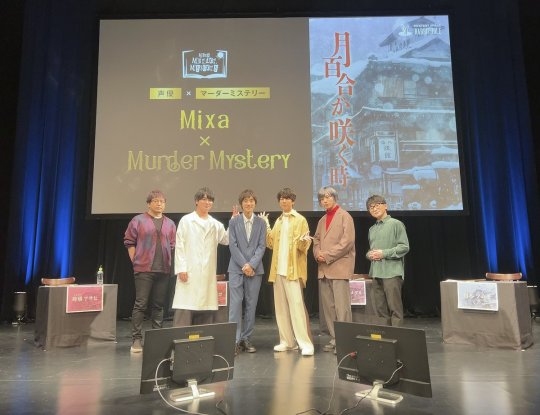
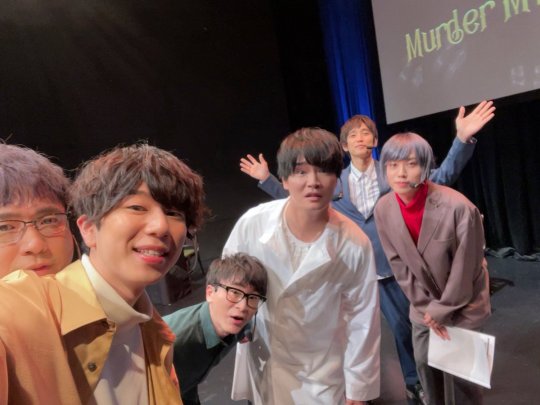
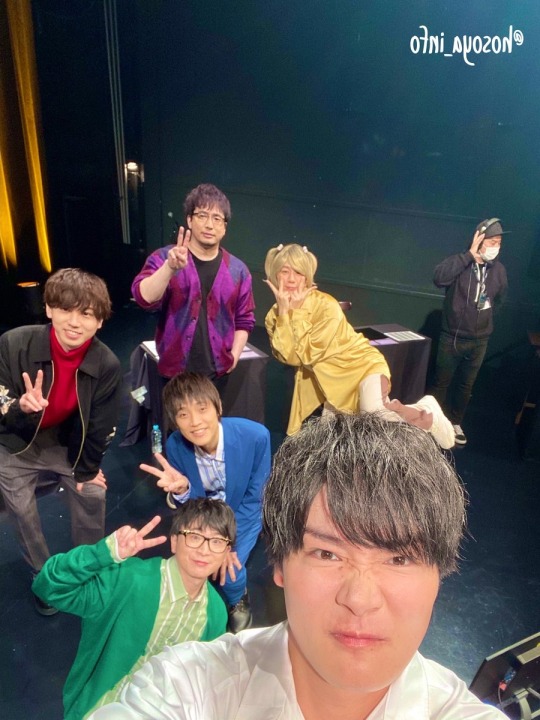
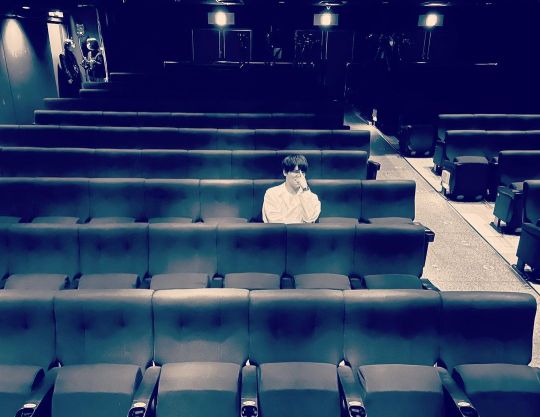
#Yoshida Hisanori#Abe Atsushi#Kajiwara Gakuto#Nishiyama Kotaro#Hosoya Yoshimasa#Yasumoto Hiroki#image
11 notes
·
View notes
Text
Rencontre Tôkyô-Pyongyang | Akihito en fonction jusqu'au bout | Tarô Kôno pour la coopération au Moyen Orient
Rencontre Tôkyô-Pyongyang | Akihito en fonction jusqu’au bout | Tarô Kôno pour la coopération au Moyen Orient
Dans la revue de presse du mardi 1 mai, nous allons aborder : les réserves du gouvernement Abe sur une éventuelle rencontre avec Kim Jong-un, la volonté de l’empereur de remplir intégralement ses fonctions jusqu’à son abdication, une rencontre pour la paix au Moyen-Orient présidée par le ministre des Affaires étrangères japonais et des kimonoà l’effigie des pays participants aux Jeux Olympiques…
View On WordPress
#2020#Affaires étrangères#Akihito#défilé#Diplomatie#Empereur#Jeux Olympiques#Kim Jong-un#kimono#Mode#Moyen-Orient#paix#Pyongyang#rencontre shinzô abe#responsabilités#Taro Kono#Tôkyô#yoshimasa Takkura
2 notes
·
View notes
Video
youtube
Kingdom season 3 teaser PV. Season 3 will premiere in April 2020.
Cast
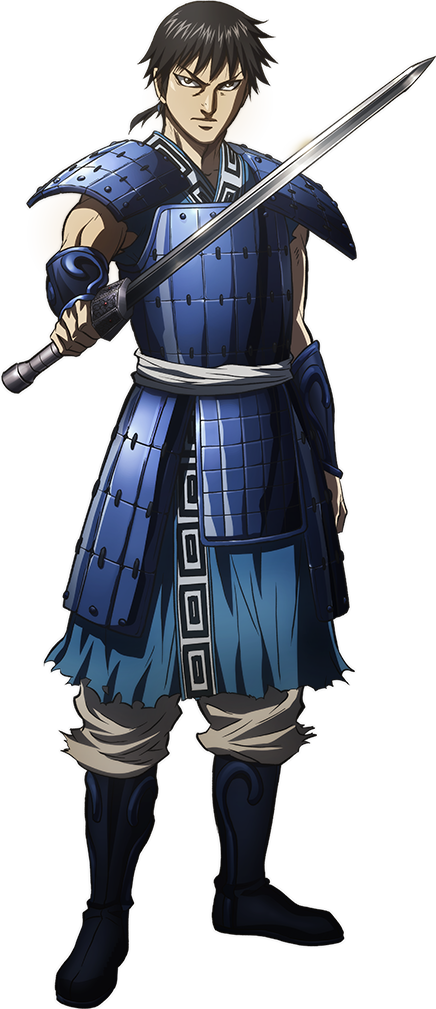
Masakazu Morita as Shin (Xin)
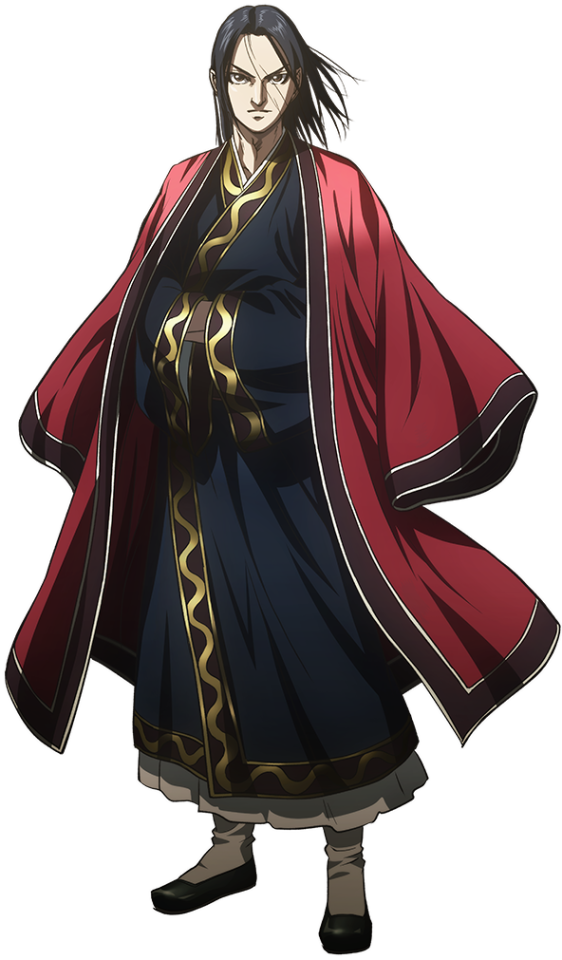
Jun Fukuyama as Ei Sei (Yin Zheng)
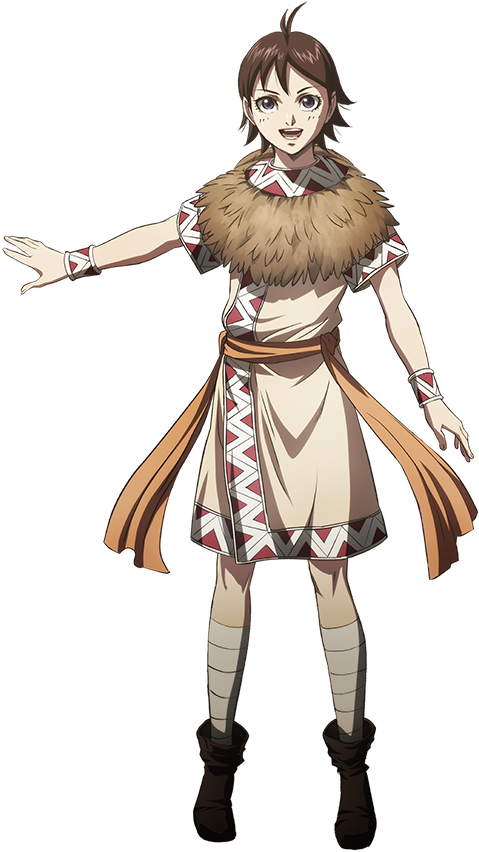
Rie Kugimiya as Karyō Ten (He Liao Diao)
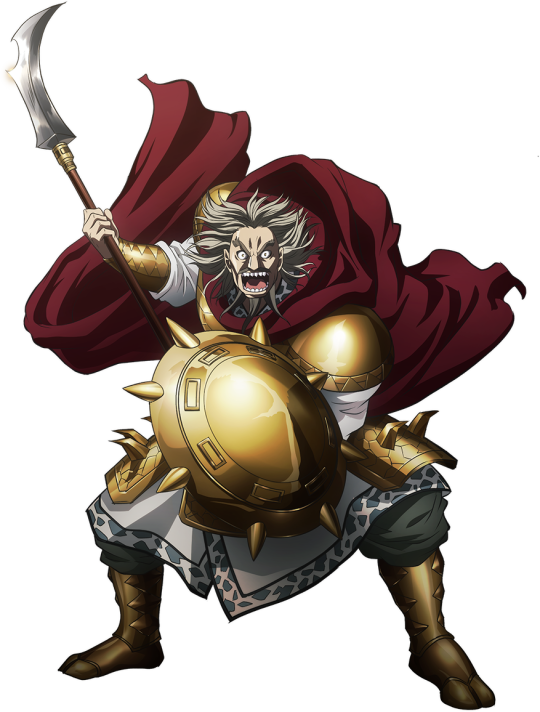
Shirō Saitō as Hyou Ko (Biao Gong)
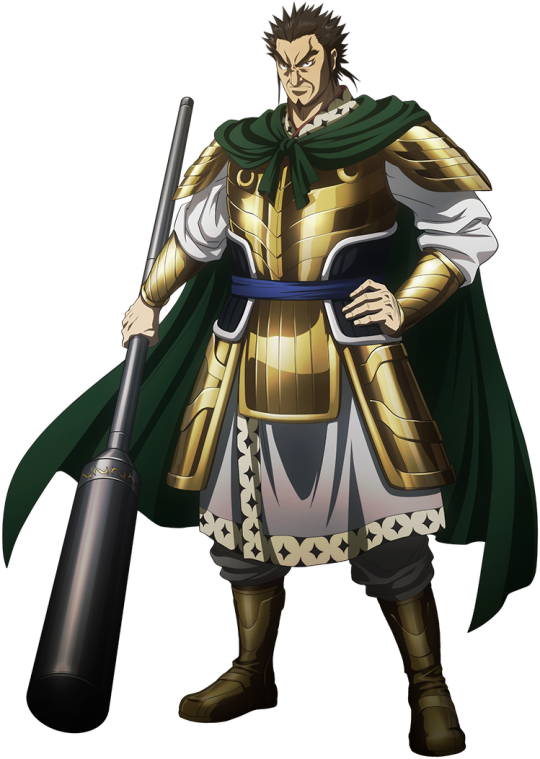
Taiten Kusunoki as Mōbu (Meng Wu)
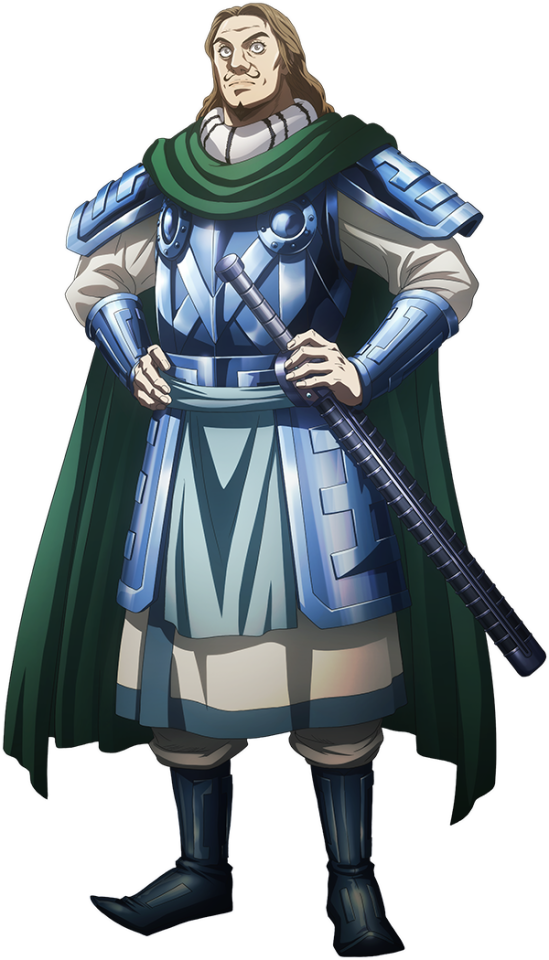
Akio Kato as Tō (Teng)
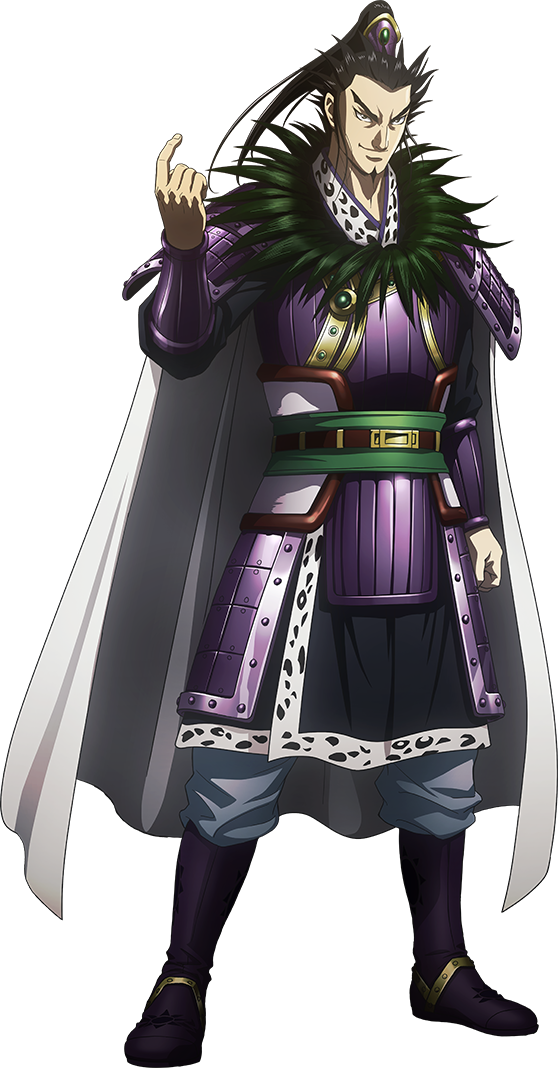
Kentarō Itō as Kanki (Huan Yi)
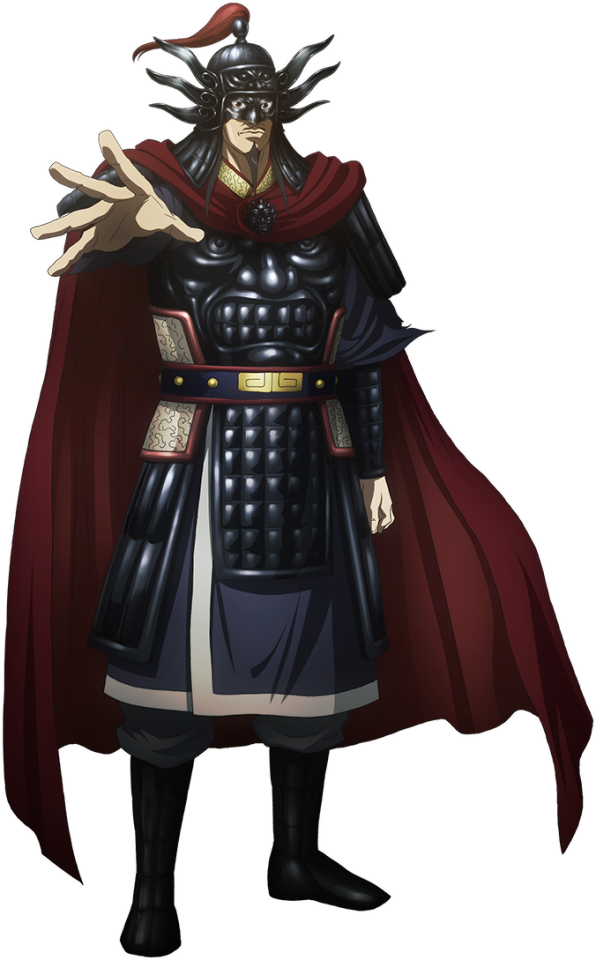
Kenyuu Horiuchi as Ōsen (Wang Jian)
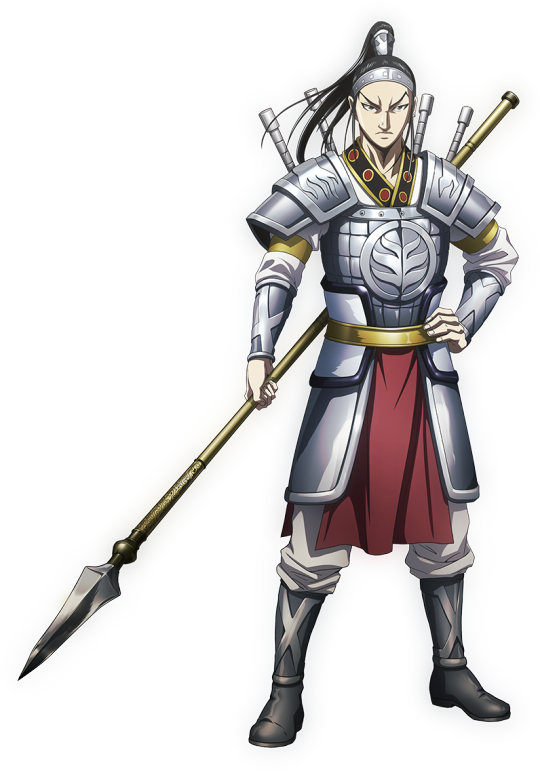
Yoshimasa Hosoya as Ōhon (Wang Ben)
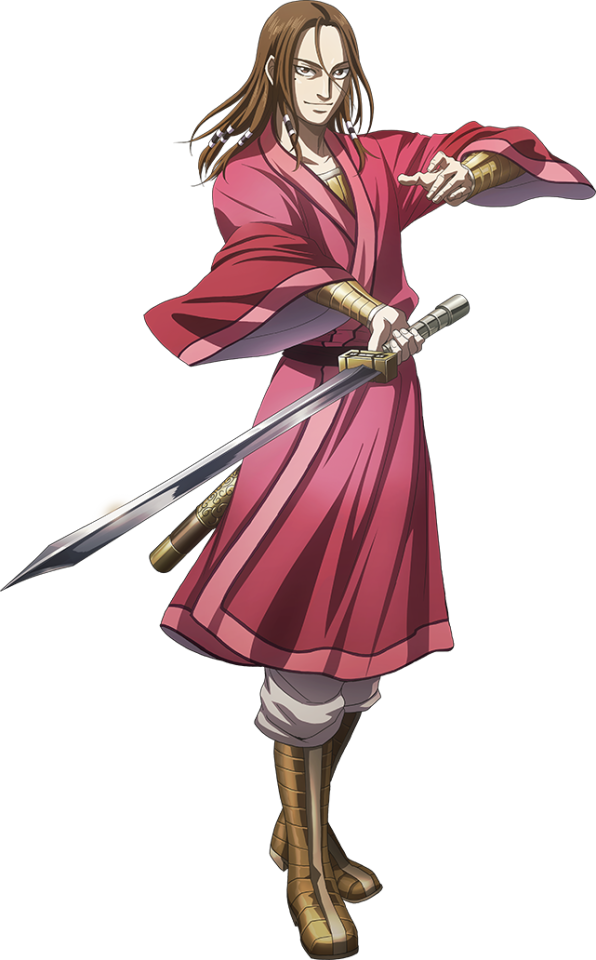
Hirofumi Nojima as Mōten (Meng Tian)

Toshiyuki Morikawa as Ri Boku (Li Mu)
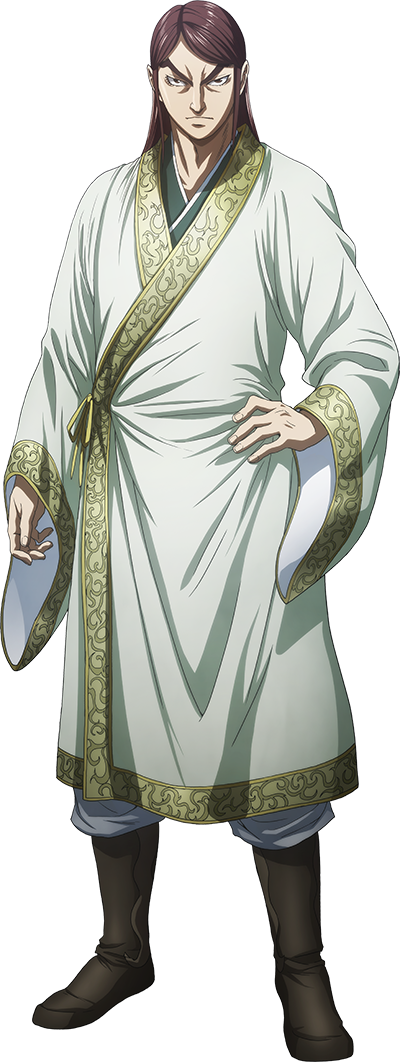
Yūya Uchida as Shun Shin Kun (Lord Chunshen)
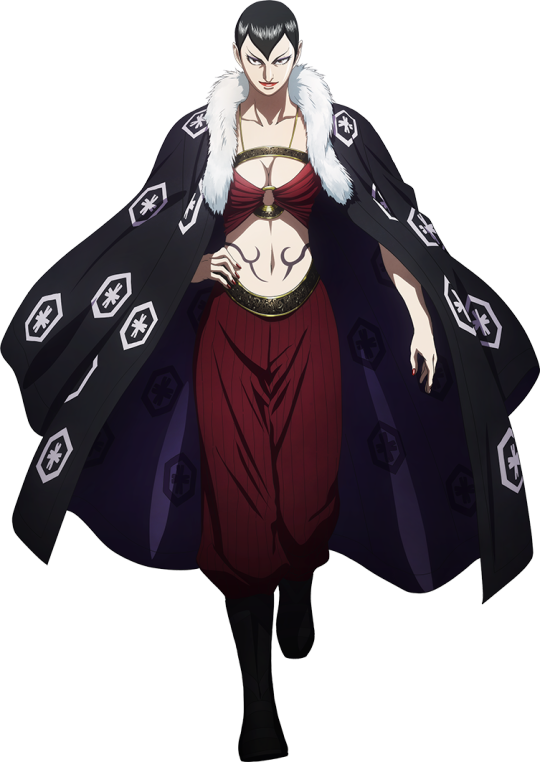
Atsuko Tanaka as Ka Rin (Wa Lin)
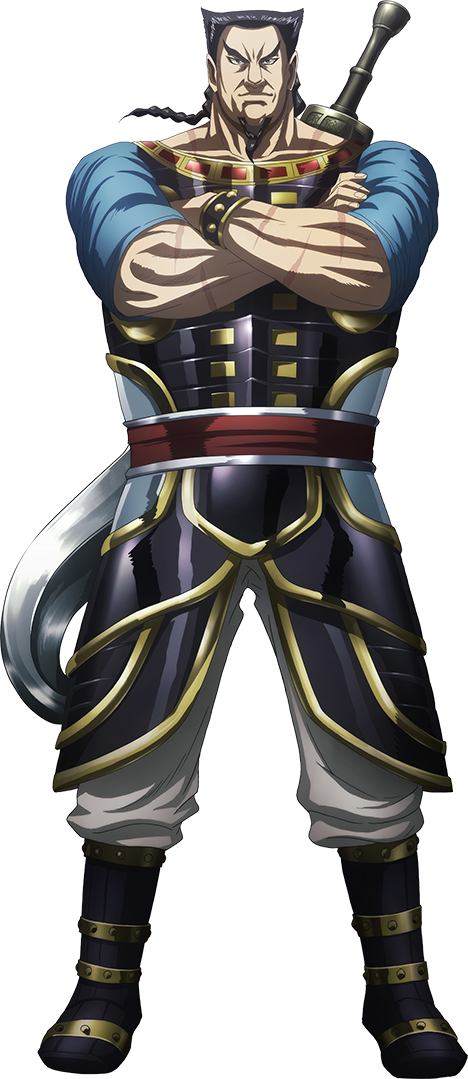
Miō Tanaka as Kan Mei (Han Ming)
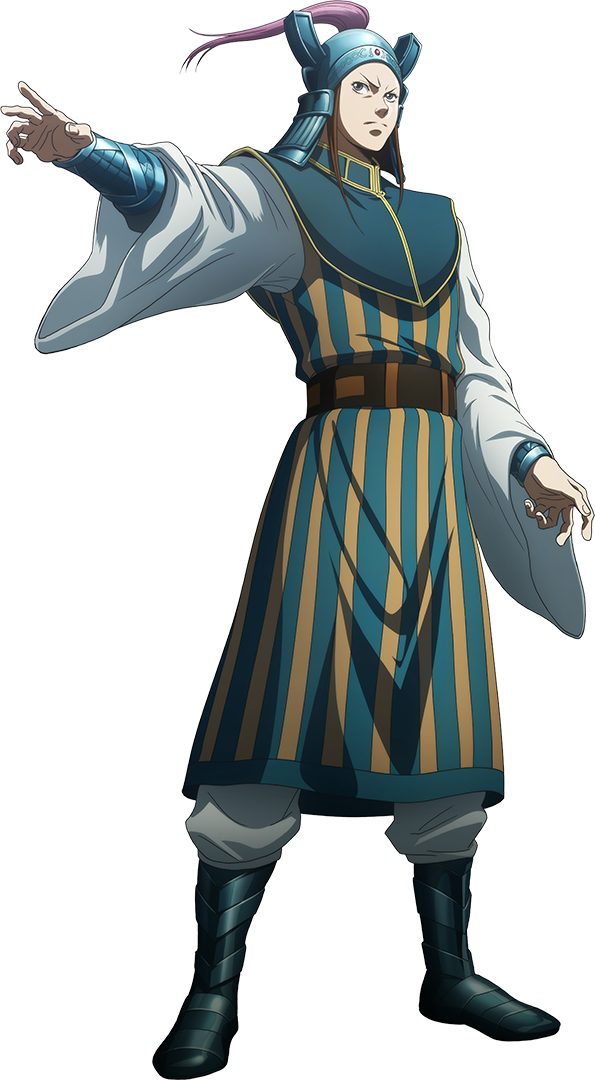
Daisuke Namikawa as Go Hou Mei (Wu Feng Ming)

Tatsuhisa Suzuki as Kou Yoku (Xiang Yi)
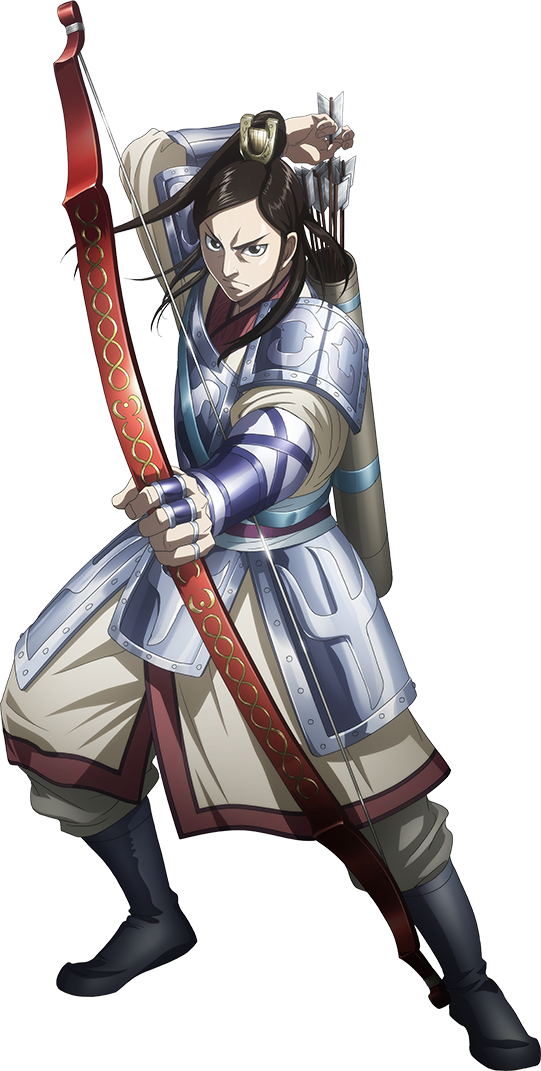
Yūto Uemura as Haku Rei (Bai Li)
Staff
Director: Kenichi Imaizumi
Series Composition: Noboru Takagi
Character Design: Hisashi Abe
Animation Production: Studio Signpost
29 notes
·
View notes
Video
youtube
Kaiki is back with a new video! “Sugita's visit at the doctor, Nobu imitations, Virus Smith, about a drunk Sumipe and more”
I’m just going to be putting stuff for context below. There’s a 9/10 chance this is about to be flagged because of what Sugita said with his dirty jokes.
In this video, he imitates:
Showtaro Morikubo
Nobuhiko Okamoto
Yoshimasa Hosoya
Director Noriyuki Abe
Shiori Izawa
There’s probably more
At 1:43, he makes a pun.

Prepuce means the foreskin meaning the skin on the p*nis. Yes, I actually had to think and search a little to remember.
At 3:55 (or around that), Koutarou Nishiyama talks about being the same age as Naobao.
Here are the people mentioned and their ages:
Yuuichirou Umehara - March 8, 1991 (age 28 years)
Saori Hayami - May 29, 1991 (age 27 years)
Natsuki Hanae - June 26, 1991 (age 27 years)
Koutarou Nishiyama - October 11, 1991 (age 27 years)
Nao Touyama - March 11, 1992 (age 27 years)
Aoi Yuuki - March 27, 1992 (age 27 years)
The cutoff date for Japanese schools (from what I gather) is April 1st since school starts in April. This basically means that your child has to be six years of age when entering school. It's not like America where it cuts off on January 1st. Because of that, Koutarou, Nao, Hanae, Yuuki, and Saori would be in one year, and Umehara would be in a class above.
This applies for Sugita and Nakamura who are both born in 1980.
Nakamura - February 20, 1980 (age 39 years)
Sugita - October 11, 1980 (age 38 years)
I can’t imagine Akira Ishida laughing like that. He’s such a stoic and calm guy.
At 6:58, they talk about Shuuhei Hisagi which is a character from Bleach. Yuu Kobayashi plays the kid version while Katsuyuki Konishi plays the adult version. The director he’s talking about is Noriyuki Abe who directs and does storyboard.
At 7:57 they talk about Shiori Izawa (Pochi) who’s a fellow voice actress who was born Feb 1, 1987. She usually does background characters and such in series like Durarara, Aho Girl (with Sugita), Fairy Tail, etc.
Yes, Sugita and Yasumoto went drinking with Rina Hidaka and Sumire Uesaka.
Haruhi Suzumiya came out in Spring 2006.
Kaito would’ve been in his last year of grade school or something like that since he was born October 13, 1993. He would’ve been 12 years old.
Inori Minase would’ve been 10 since she was born December 10, 1995.
Sayaka Harada would’ve been 8 since she was born December 27, 1997.
Sugita didn’t like dancing that dance.
I would’ve been 4.
I don’t know how the heck Jackson ended up in someone else’s house.
#seiyuu#sugita tomokazu#okamoto nobuhiko#mafia kajita#nishiyama koutarou#uesaka sumire#hidaka rina#izawa shiori
13 notes
·
View notes
Text
Seiyuu That Write Music and Play Instruments!
Almost everything in this post is from this Reddit thread. I enlisted the help of the Reddit community, and I was so impressed! They’re very thorough and contributed a lot of what makes this list! I will try to find examples and sources if the information didn’t come with it.
Check out the Reddit Thread HERE!
Thanks to all the people who contributed to this list!
I might be making edits as we find new information! Feel free to contribute to this list too!
Seiyuu That Write Music!
Okamoto Nobuhiko He helps write lyrics for his solo music. There’s a post on Tumblr where he talks about it [here].
Kakihara Tetsuya
Irino Miyu
Miyano Mamoru
Suzuki Tatsuhisa He often writes for his band Oldcodex.
Toyonaga Toshiyuki
Saito Soma It’s mentioned in Seiyuu Digest that he does write his own music.
Ito Kento It’s mentioned in Seiyuu Digest that he started writing music in 2009.
Nana Mizuki She writes a lot of her music
Minako Kotobuki She wrote all the new songs on her latest album
Maaya Sakamoto She often collaborates with other composers like Yoko Kanno, but she’s also known for writing lyrics. She talks a lot about her life and involvement with music in an interview. [source]
Saori Hayami Wrote “Jewelry” which was used for the ending of the new Cardcaptor Sakura which you can listen to [here].
Aoi Shouta Here’s a song he wrote [video].
Hosoya Yoshimasa He wrote the lyrics to few of his character songs for Shiraishi Kuranosuke from TeniPuri. [source]
Midorikawa Hikaru For E.M.U. (Entertainment Music Unit) [source]
Ishikawa Hideo For E.M.U. (Entertainment Music Unit) [source]
Ryotaro Okiayu For E.M.U. (Entertainment Music Unit) [source]
Nobutoshi Canna For E.M.U. (Entertainment Music Unit) [source]
Daisuke Sakaguchi For E.M.U. (Entertainment Music Unit) [source]
Seiyuus that play instruments
Yamadera Kouichi - guitar (he played it on Twitter with a weird face filter
Ono Kensho - guitar (he learned it in high school)
Hosoya Yoshimasa - guitar
Saito Soma - guitar They say a lot about his musical abilities in his Seiyuu Digest article.
Terashima Takuma - guitar
Hatano Wataru - guitar
Suzuki Tatsuhisa - guitar + piano
Morikubo Shoutaro - guitar
Suzumura Kenichi - guitar + piano
Umehara Yuichiro - guitar + piano
Miyano Mamoru - guitar + harmonica + harp
Irino Miyu - guitar + piano + drums [thanks @datenshi-luci for your contribution!]
Toyonaga Toshiyuki - guitar + drums
Maeno Tomoaki - flute
Kimura Ryohei - piano + keyboard
Aoi Shouta - flute + piano
Kakihara Tetsuya - piano + keyboard
KENN - piano + keyboard
Kaji Yuki - Electone/Electric organ [interview source] If you just want to know what an electone sounds like, here’s a video. (Yeah, that’s all one instrument. It’s an OP instrument, to say the least)
Miyuki Sawashiro - piano [source]
Chiharu Sawashiro - guitar [source]
Nana Mizuki - piano + harp She’s friends with the famous harpist Agematsu Mika and they performed together in some of Mizuki's concerts. [source]
Maaya Sakamoto - guitar [source]
Minori Chihara - guitar [source]
Matsui Eriko - trumpet
Atsushi Abe - piano
Tadokoro Azusa - guitar
Uchida Yuuma - piano
Tachibana Rika - piano
Gotou Yuuko - guitar
Komatsu Mikako - guitar
Inoue Marina - piano
Kawasumi Ayako - piano It's also how she got into the seiyuu industry
Serizawa Yuu - piano
Matsuoka Yoshitsugu - guitar + tuba
Aida Rikako - piano She does some songs for Love Live! Sunshine!! live performances
Otsuka Sae - trombone + piano + guitar [source] Takanashi Rie - guitar
Touyama Nao - piano + electone Here’s a video of her performing while singing and playing the piano [here].
Nishi Asuka - flute + trumpet
Yasumoto Hiroki - tuba (high school)
Nakamura Yuuichi - Euphonium (high school)
Ito Kento - guitar + drums + piano + bass + synths It’s talked about in his Seiyuu Digest article
Tarusuke Shingaki - guitar It’s talked about in his Seiyuu Digest article
According to Midorikawa Hikaru’s Seiyuu Digest article, he was part of the group called E.M.U. (Entertainment Music Unit) which consisted of some veteran seiyuu. They formed in 1995 and disbanded in 2000.
Midorikawa Hikaru - bass
Ishikawa Hideo - drums
Ryotaro Okiayu - guitar
Nobutoshi Canna - lead guitar
Daisuke Sakaguchi - keys
All the seiyuu of “Hibike Euphonium” were instructed to learn their character’s designated instrument for a seiyuu event. [source]
Tomoyo Kurosawa - Euphonium
Ayaka Asai - Tuba
Moe Toyota - Contrabass
Chika Anzai - Trumpet
All the seiyuu of “K-On” learned their character’s designated instrument. ~This is a video of them learning~
Yoko Hikasa - electric bass [source]
Satomi Sato - drums [source]
Aki Toyosaki - guitar [source]
Minako Kotobuki - keyboard + guitar [source] (Technically she doesn’t play the guitar for K-On but knows it nonetheless)
The members of Poppin' Party and Roselia from BanG Dream! play their respective instruments:
[PoPiPa]
Aimi - guitar
Otsuka Sae - guitar
Nishimoto Rimi - bass
Ohashi Ayaka - drums
Itou Ayasa - keyboard
[Roselia]
Kudou Haruka - guitar
Endou Yurika, Nakashima Yuki - bass
Sakuragawa Megu - drums
Akesaka Satomi - keyboard
A lot of the Your Lie in April cast actually know how to play the piano (this is where Kaji also says that he plays the electone) [video source]
Hanae Natsuki - piano + guitar
Taneda Risa - piano
Sakura Ayane - piano
Hayami Saori - piano
#seiyuu#seiyuu music#long post#I can't tag all these people#but I'm gonna try#natsuki hanae#kaji yuki#hosoya yoshimasa#saito soma#takuma terashima#umehara yuichiro#Nobuhiko Okamoto#kakihara tetsuya#uchida yuuma#kenn#maeno tomoaki#hatano wataru#suzuki tatsuhisa#I give up!
29 notes
·
View notes
Text
Shonen Onmyoji Chapter 10.2 Highlights
The story opened up with the narrator giving an explanation of the Imperial Court Positions in the Heian Era. It was said that most of them were hereditary meaning the child of a samurai became a samurai, the child of a musician became a musician, the child of a scholar became a scholar and of course the child of an onmyoji became an onmyoji.
Masahiro was doing chores for the Gagaku (Bureau of Music), Oiryo (Bureau of Palace Kitchen), and Kamoryo (Bureau of Housekeeping) Dormitories.
Mokkun remarked that onmyoji were paid to little for the work they do and suggested that Masahiro ride an Ajiro Cart instead of traveling on foot. Masahiro refused and said that his father and his Uncle Yoshihira also traveled on foot and there was no way he would use it regardless of his grandfather's official rank.
Mokkun said that was the point because onmyoji had special skill job, which were Star Reading, Astronomical Observation, Calendar Making, Blessing Prayer Performance, and Auspicious Judgement and sometimes they get in danger by exterminating Joyo (), which often translates to demons, monsters, and ghosts
They were then greeted by Masshiro’s father, Yoshimasa. Yoshimasa commented that Masahiro seemed to be doing well.
Masahiro informed Mokkun that his grandfather and father received individual requests from the High Lord, which were separate from the salary.
The narrator notified the reader that during that time period each of the great aristocrats had 44 talented onmyoji due to the fact that their fortune-telling skills could decide political situations. That was the reason why Seimei and Yoshimasa were close friends with Michinaga and Yukinari of the Fujiwara Clan.
Mokkun responded and said that was probably true with Seimei and Yoshimasa, but told Masahiro that he would be in charge of chores at the Onmyo Dormitory for a while.
There is a chart that listed the positions in the Onmyo Dormitory, which were:
Onmyo no Kami (陰陽頭) (Director of Onmyoryo)
Onmyo no Suke (陰陽助) ( Assistant Director of Onmyoryo)
Onmyo no Taizoku (陰陽大属) (Recordkeeper of Onmyoryo)
Onmyo no Shozoku (陰陽小属) (Assistant Recordkeeper of Onmyoryo)
Onmyo Hakase (陰陽博士) (Instructor of Onmyoryo)
Tenmon Hakase (天文博士) (Master of Astronomy)
Reki Hakase (曆博士) (Master of the Calendar)
Rokoku Hakase (漏刻博士) (Master of the Clock)
Gakusei Tokugōshō (学生得業生) (Talented Student)
Shibu Jikitei (使部直丁) (Direct Delivery Envoy)
Mokkun fussed at Masahiro saying that the Direct Delivery Envoy was even a low paying job within the Onmyo Dormitory and the reason why Seimei was just an Onmyo Student until his 40s was because the salary was not worth the work. Mokkun asked if Masahiro could do it.
Yoshimasa spoke up and said that it was true that Seimei had been a long-time Onmyo Student, but that was nearly 40 years ago and said that the country, the imperial court, and the Onmyo Dormitory continued to change.
After Masahiro wondered off Yoshimasa said that Mokkun shouldn’t threaten Masahiro too much because he was still a child.
Mokkun answered and said that Masahiro was much more courageous than he and Yoshihara as infants because Masahiro didn’t cry when he came near him. Mokkun added that because of that Masahiro was truly Seimei’s Grandson.
Yoshimasa thought about how Toda (Mokkun’s real name) never called him and his brother Yoshihara children of Seimei.
Masahiro noticed that his father was in deep thought and asked if Mokkun said anything rude to his father.
Mokkun got angry at this and Masahiro bade farewell to Yoshimasa and said that he will see him at home.
Masahiro announced in front of a crowd that he still wanted to be an Onmyoji and that it was the work of each individual that brought change. Then he swears that he would defeat Abe no Seimei.
Of course Mokkun pressed Masahiro’s berserk button and said “Do your best Seimei’s Grandson” and Masahiro replied with his infamous line of “Don’t Say Grandson” and the chapter ended.
#Shonen Onmyoji#Shounen Onmyouji#Abe no Masahiro#Mokkun#Toda#Abe no Yoshimasa#Abe no Seimei#Abe no Yoshihara#Fujiwara no Michinaga#Fujiwara no Yukinari#Onmyo Bureau
2 notes
·
View notes
Text
Le Premier ministre japonais s'engage à renforcer la sécurité du G7 après l'attentat à la bombe artisanale
Le secrétaire d’État Antony Blinken avec le ministre japonais des Affaires étrangères Yoshimasa Hayashi à Karuizawa.KIM KYUNG-HOON / PISCINEEFE Asie Un fumigène contre le Premier ministre japonais « impopulaire » Neuf mois après que l’ancien Premier ministre populaire Shinzo Abe a été abattu lors d’un rassemblement électoral, Japon est de nouveau ébranlé par l’attentat de samedi dernier contre…

View On WordPress
0 notes
Text
Missile commander sto

Tatsumi, the analyst, Japan’s response to Beijing is likely to follow the same playbook as with Pyongyang: diplomatic protests and more vigilance. The missile incident is in some ways a familiar routine for Japan, which has seen 10 North Korean ballistic missiles land in its economic zone since 2016. Speaking to reporters, Japan’s defense minister, Nobuo Kishi, called the incident “a grave issue that concerns our national security and the safety of the people.”Įarlier on Thursday, before the missiles were fired, Hua Chunying, a spokeswoman for the Chinese Foreign Ministry, had told reporters that Beijing did not recognize Japan’s economic zone, where the missiles landed.Ĭhina also called off a meeting between its foreign minister, Wang Yi, and his Japanese counterpart, Yoshimasa Hayashi, after the Group of 7 industrialized nations issued a statement expressing concern about Beijing’s “threatening actions” around Taiwan. Shortly after the missiles landed, Tokyo issued a formal protest to China and called on it to immediately stop its military exercises near Taiwan, Japan’s Foreign Ministry said in a statement. In an opinion article in April in The Los Angeles Times, he called for the United States to clarify its policy of “strategic ambiguity” toward the island, arguing that it is “fostering instability in the Indo-Pacific region, by encouraging China to underestimate American resolve.” In other words, a crisis for the U.S.-Japan alliance.” In December, during remarks to a Taiwanese policy organization, Shinzo Abe, the former prime minister, who was assassinated last month, warned that a “Taiwan crisis would be a Japan crisis. Preparing for such an event, military planners have increased coordination with American forces and moved more troops and missile batteries to islands in southern Japan, which could be on the front lines of a clash. In its most recent white paper, Japan’s Defense Ministry cautioned that the country should have “a sense of crisis” over the possibility of a U.S.-China confrontation. military bases on nearby Okinawa and has had a contentious territorial dispute with Beijing over the Senkaku Islands. Policymakers fear that any military confrontation over the island would inevitably draw in Japan, which hosts U.S. It is one of Japan’s largest trade partners, is a major source of advanced computer chips and lies astride a narrow strait through which virtually all of Japan’s energy resources are shipped. Taiwan, only 68 miles from a Japanese military base on Yonaguni Island, in Okinawa prefecture, lies at the center of Tokyo’s security concerns. Some analysts have argued that if Beijing’s intent was to intimidate Japan, the missile shots might have the opposite effect on Japan’s leaders. Worried about the Chinese threat to the island, the United States and others are trying to expand their piece of the island’s crucial semiconductor industry. Microchips: Taiwan is the biggest producer of the world’s most advanced microchips.and other foreign military vessels, raising concerns in Washington that the country might be turning away from engagement with the United States in favor of closer ties with China. Solomon Islands: The Pacific nation suspended visits by U.S.But critics argue that Washington needs to deploy stronger military and economic strategies. Reassuring Allies: Against a backdrop of rising tensions with China, the Biden administration has renewed its commitment to its Asian allies.Taiwan : Visits to Taiwan by House Speaker Nancy Pelosi and a delegation including Indiana’s governor have exacerbated tensions between the United States, which is seeking to deepen its ties with the self-governing island, and China, which claims Taiwan as its own.Today, U.S.-China contacts are scarce, and Beijing and Moscow are moving closer together. China: Even at their worst moments during the Cold War, the Americans and the Soviets kept talking.Read More on the Relations Between Asia and the U.S.

0 notes
Text
Sri Lankan Prez: Will Back India On Permanent UNSC Seat Bid
Sri Lankan Prez: Will Back India On Permanent UNSC Seat Bid
Colombo : Sri Lankan President Ranil Wickremesinghe on Tuesday said his government will back the bids of India and Japan for permanent member status at the UN security council . Wickreme singhe is current lyin Japan to attend the state funeral of the former Japan PM Shinzo Abe . During a meeting with Japanese foreign minister Yoshimasa Hayashi on Tues day , Wickreme singhe ” appreciated the…

View On WordPress
0 notes
Photo



23 notes
·
View notes
Text
Sri Lanka to back bids of India and Japan for permanent member status at UNSC: President Wickremesinghe - Times of India
Sri Lanka to back bids of India and Japan for permanent member status at UNSC: President Wickremesinghe – Times of India
COLOMBO: Sri Lankan President Ranil Wickremesinghe on Tuesday said his government will back the bids of India and Japan for permanent member status at the UN Security Council. President Wickremesinghe is currently in Japan to attend the state funeral of the former Japanese prime minister Shinzo Abe. During a meeting with Japanese foreign minister Yoshimasa Hayashi on Tuesday, Wickremesinghe…
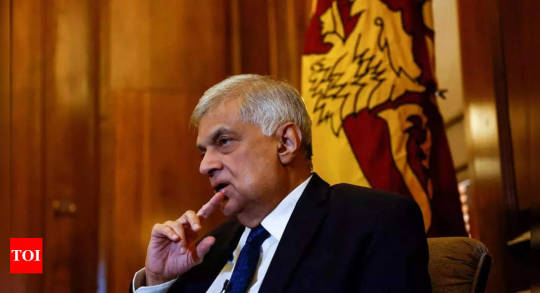
View On WordPress
0 notes
Text

Japan verurteilt Ukraine-Krieg Russland bricht Verhandlungen um Kurilen ab 21.03.2022, 20:43 Uhr Japan und Russland haben noch immer keinen Friedensvertrag zur Beilegung der Feindseligkeiten im Zweiten Weltkrieg geschlossen. Im Mittelpunkt des Streits stehen kleine Inseln im Kurilen-Archipel. Wegen Tokios Verurteilung des Krieges gegen die Ukraine beendet Moskau die Gespräche nun. Die russische Regierung hat angekündigt, dass sie die Friedensverhandlungen mit Japan zur formellen Beilegung eines bis zum Zweiten Weltkrieg zurückreichenden Streits nicht mehr weiterverfolgt. Als Begründung führte das Außenministerium in Moskau die "offen feindselige Haltung" an, die Japan mit Blick auf den russischen Militäreinsatz in der Ukraine eingenommen habe. Russland und Japan haben nach dem Zweiten Weltkrieg bis heute keinen Friedensvertrag geschlossen. Japan wolle den Interessen Moskaus mit seiner Haltung zum russischen Militäreinsatz im Nachbarland "Schaden zufügen", erklärte das russische Außenministerium. Es sei der russischen Seite daher nicht möglich, die Gespräche fortzusetzen. Russland und Japan hatten nach dem Zweiten Weltkrieg wegen eines Territorialkonflikts kein Friedensabkommen abgeschlossen. Die Aufkündigung der Friedensgespräche durch Russland erfolgte zwei Tage, nachdem Japans Ministerpräsident Fumio Kishida bei einem Besuch in Neu Delhi versucht hatte, Indiens Regierung zu einer Verurteilung des russischen Militäreinsatzes in der Ukraine zu bewegen. Die Regierung in Tokio hatte sich zuvor den westlichen Sanktionen gegen Russland angeschlossen. Mehr zum Thema Bei dem Streit zwischen Russland und Japan geht es um vier kleine Inseln im Kurilen-Archipel. Die sowjetische Armee hatte die Inseln in den letzten Tagen des Zweiten Weltkrieges eingenommen. Japan verlangt die Rückgabe der Inseln. Erst vor gut zwei Wochen hatte Japans Regierung seine Gebietsansprüche erneuert. Außenminister Yoshimasa Hayashi bezeichnete die vier umstrittenen Inseln als "festen Bestandteil" Japans, wie die japanische Tageszeitung "Sankei Shimbun" berichtete. Zuvor hatte auch Ministerpräsident Fumio Kishida diese Formulierung benutzt.
0 notes
Text
Are Japan’s Part-Time Employees Working Themselves to Death?
By Joshua Hunt, The Atlantic, Aug. 7, 2018
On a sunny morning in June, a middle-aged lawyer named Yoshimasa Obayashi heard his telephone ring once, and nearly ring again, before he rushed to snatch the phone’s receiver from its cradle. It was an unexpected call, from an unknown caller, who confessed that he feared he was working himself to death. In Japan, this sentiment can be expressed using a single word: Karoshi, or “death from overwork,” refers to fatalities from heart attacks, suicides, and other health issues resulting from the stress and fatigue of long hours spent on the job.
In 1988, at the height of Japan’s economic “bubble years,” a group of doctors and labor lawyers launched Japan’s first telephone hotlines dedicated to curbing karoshi. They published their office telephone numbers in pamphlets, and later online, as a means of offering free consultations to at-risk workers, who typically called the volunteer doctors, and bereaved family members, who usually reached out to lawyers like Obayashi for help with compensation claims.
During the summer of 2000, corporate bankruptcies drove hundreds of run-down salarymen to call the hotline each day. By that time, Japan’s government acknowledged just 100 to 200 karoshi cases each year, though Hiroshi Kawahito, a lawyer at the National Defense Counsel for Victims of Karoshi, told me he doesn’t believe that number. He says that given the level of secrecy on the part of employers and what he considers to have been an overly narrow government definition of karoshi at the time--which, for example, didn’t count someone as having worked to death unless they logged more than 100 hours of overtime in the month before dying--the actual number of victims might have been as high as 10,000 cases annually. (The government now uses a lower threshold of hours.)
Press reports about the karoshi epidemic helped push millions of young workers--many of them college graduates who had been offered jobs with major companies--to opt out of Japan’s deadly corporate culture, instead choosing freelance or part-time careers that allowed for a more relaxed lifestyle. It seemed like a prophylactic, of sorts, against karoshi, and indeed, until around 2008, Japan’s karoshi hotlines were used almost exclusively by full-time, salaried workers. (It was considered a shocking outlier, for example, when a young restaurant worker killed herself that year after working more than 140 hours of overtime in a single month.)
These days, though, Obayashi feels that part-time workers are increasingly at risk of karoshi. In recent years, firms have been eschewing full-time workers in favor of more flexible arrangements with recruits who work for lower wages, with less job security, which leaves them vulnerable to abuses like unpaid overtime and has forced many to take extra jobs. Since 2015, Japan’s number of workers with two or more jobs has grown by roughly 30 percent. “Today’s generation of part-time workers can’t afford to be so carefree,” Obayashi told me.
The Japanese government, which now considers people to be at risk of karoshi if they regularly work 60 hours a week or more, does not publish statistics on the working hours of part-timers with multiple jobs. In July, hoping for a clearer picture, I visited Asami Ito, a community manager at Lancers, which builds software platforms that match freelance workers with companies. According to Lancers research, some 4.5 million full-time workers in Japan have second jobs, where they work, on average, between six and 14 additional hours each week, on top of any overtime hours they clock at their primary job; a small number of them work up to 30 or 40 hours per week at their second jobs. “We’re recruiting many more ‘parallel workers,’” Ito told me, using a Lancers nickname for people with side jobs on top of full-time jobs. Ito said Lancers’s research suggests most of Japan’s workforce will be freelancers by 2027.
The fact that people are working multiple part-time jobs just to earn a living wage is surprising, given that Japan’s low birth rates have left the labor market as tight as it has been in forty years, with almost 1.6 jobs for every applicant. In the food-service industry, workers are in such short supply that McDonald’s recently resorted to an expensive advertising campaign aimed at recruiting housewives and retirees to help out with its busiest shifts. Convenience-store chains have hired more foreign workers, while small and mid-sized manufacturing companies have increasingly turned to automation. But the one recruitment strategy that hasn’t really taken hold is increasing wages.
An explanation lies partly in Prime Minister Shinzo Abe’s signature fiscal policy, known as “Abenomics,” which relies in part on using monetary policies to weaken the yen so as to make exports cheaper for foreigners--which has increased profits for Japan’s manufacturers. In theory, higher corporate profits should have led to higher wages and an increase in consumer spending. Instead, Japan’s corporations have chosen to sit on the piles of cash they’ve earned from Abe’s fiscal policy. Each spring, over the past six years of Abenomics, the leaders of Japan’s major industries have ceded remarkably little ground to unions during the annual wage negotiations known as shunto. Workers have responded by saving what little cash they have, rather than spending it. And while a weaker yen has helped corporations increase exports, it has also made importing products and materials more expensive, which contributes to weakened buying power for Japan’s increasingly cash-strapped households. Overall, workers are spending an average of 11 percent more time to earn the same salary they were bringing home about 20 years ago, and some are working unpaid overtime on top of that. Even the most promising gains leave room for pessimism: In June, government data showed that inflation-adjusted wages rose at a pace not seen since 1997, but that was mostly due to large one-off summer bonuses
In recent years, there have been several high-profile cases of karoshi. In 2013, a 31-year-old journalist working for Japan’s national broadcaster died of heart failure after working 159 overtime hours in a single month, prompting lawmakers to pass legislation aimed at creating greater awareness of the dangers of karoshi. In 2015, a 24-year-old rookie employee at Japan’s largest advertising firm, Dentsu, took her own life under similar circumstances.
The fact that karoshi risk has spread outside Japan’s “lifetime employment” system appears to be related, in part, to a series of legislative changes. A karoshi-prevention measure set to go into effect next year will restrict overtime to 45 hours during normal months, though it allows for up to 100 overtime hours during busier months. Many workers who have come to rely on overtime wages have simply responded by taking on second jobs, according to Lancers data. That development has been helped by a separate recent decision, meant to improve labor mobility, in which Japan’s Ministry of Labor canceled a law that had prevented workers from taking a second job without the approval of their primary employer.
Jun Kobayashi, who has three service-industry jobs that keep him on his feet for as many as 70 hours most weeks, is a reluctant sort of pioneer in the new class of Japanese workers. When I met him on a damp, humid afternoon near the end of June, he barely had time for the subway ride between the job he’d worked that morning and the one he’d work that night. As we hurtled through the spiderweb of tunnels that sprawl out beneath central Tokyo, I asked Kobayashi whether his bosses forced him to work as many hours as he did. “It’s true that they really rely on me,” he said. “But if I didn’t work so many hours I wouldn’t be able to get by.”
1 note
·
View note